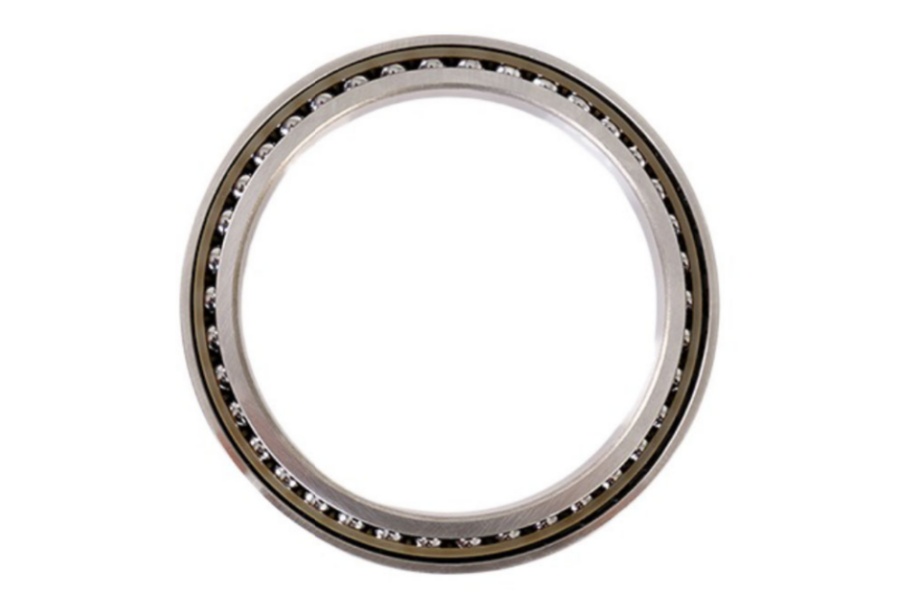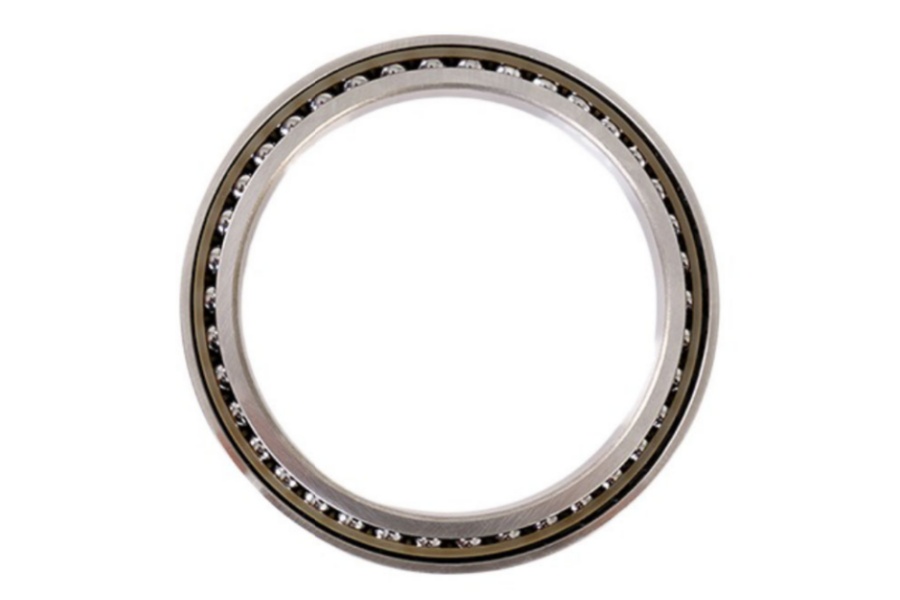
Four Steps to Repair a Slewing Bearing
What is Slew Bearing
Slew Bearing, also commonly known as a slewing ring bearing or turntable bearing, is a large-diameter, precision-engineered rotational bearing designed to handle combined loads – axial (thrust), radial, and tilting moments – simultaneously. It enables rotational movement between two structures, typically featuring robust inner and outer rings with raceways containing rolling elements (balls, cylindrical rollers, tapered rollers, or crossed rollers). Integrated gear teeth (internal or external) are often machined onto one of the rings. Slew bearings are fundamental components in heavy machinery and equipment requiring controlled, load-bearing rotation, such as cranes, excavators, wind turbines, medical scanners, and radar platforms. Their design allows them to support immense weights and complex force interactions while providing smooth, reliable rotation.

Four Steps to Repair a Slewing Bearing
Repairing a slew bearing involves a systematic remanufacturing process that can restore it to meet or exceed original performance specifications, often at a significant cost advantage over replacement. The core process consists of four critical steps:
Comprehensive Inspection & Evaluation:
The repair process begins with a meticulous inspection. The bearing is thoroughly cleaned to remove all grease, dirt, and debris. Critical dimensions (raceway diameters, groove depth, gear profiles, mounting surface flatness) are precisely measured and recorded. Advanced Non-Destructive Testing (NDT), primarily Magnetic Particle Inspection (MPI) and often Ultrasonic Testing (UT), is performed on the rings, gear teeth, bolt holes, and critical welds (if applicable) to detect subsurface cracks, material flaws, or fatigue damage. This rigorous assessment determines if the bearing is a viable candidate for remanufacturing. Factors disqualifying a bearing include severe structural cracks, excessive wear beyond repairable limits, significant plastic deformation, or deep corrosion pitting in critical load zones. If viable, a detailed remanufacturing plan is created based on the inspection findings.
Precision Re-Grinding & Machining:
If the raceways exhibit wear, brinelling, or minor surface damage, they undergo precision re-grinding. This is not simply a resurfacing; it involves grinding the raceways to a precise geometric profile, often achieving tolerances tighter than the original new bearing. Maintaining the correct contact angle (e.g., 60 degrees for four-point contact ball bearings common in cranes) is crucial for optimal load distribution and longevity. For tapered roller bearings, the geometry is even more critical, requiring the contact line extensions between rollers and raceways to converge at the bearing's central axis. Other surfaces, such as mounting faces or seal grooves, may also be machined or ground to restore flatness, perpendicularity, and dimensional accuracy. This step removes minimal material while eliminating surface imperfections and restoring the required geometry.
Component Replacement & Reassembly:
Worn or damaged components are replaced with new, high-quality parts. This always includes:
All Rolling Elements: New balls, cylindrical rollers, or tapered rollers of the exact specification (grade, size, material) are installed.
Cages/Separators: New cages or separators are fitted to properly space the rolling elements.
Seals: New inner and outer seals (lip seals, labyrinth seals) are installed, chosen for compatibility with the application environment (e.g., high temperature, chemical resistance, extreme dirt/water ingress protection).
Gears (if damaged): If gear teeth are chipped, cracked, or excessively worn beyond repair, the ring may require replacement or specialized welding and re-machining (though this is less common in standard remanufacturing).
The bearing is meticulously reassembled using clean procedures to prevent contamination. New rolling elements are precisely positioned within the cages and seated into the re-ground raceways. New seals are carefully fitted into their grooves.
Lubrication, Final Inspection & Traceability:
The reassembled bearing is packed with the specified high-performance grease, ensuring optimal lubrication from the start. It undergoes a rigorous final inspection. This includes verifying smooth rotation (checking for binding or excessive noise), measuring rotational torque (ensuring it meets specifications), confirming preload (if applicable), re-checking critical dimensions, and sometimes performing a final NDT check on critical areas. The bearing is then thoroughly cleaned, protected against corrosion, and assigned a unique serial number for traceability. Detailed documentation of the inspection results, re-grinding tolerances, replaced components, and final tests is provided, guaranteeing the remanufactured bearing meets defined quality standards, often equal to or exceeding those of a new bearing.
Slew Bearing Characteristics
Slew bearings are defined by their unique capabilities and construction:
Combined Load Handling: Engineered to support significant axial, radial, and tilting moment loads simultaneously – their defining feature.
Integrated Gear Teeth: Often incorporate hardened and ground internal or external gear teeth for direct drive engagement.
Large Diameter, Compact Cross-Section: Provide high load capacity relative to their height.
Rolling Element Types: Available in various configurations: Single-row four-point contact ball (compact, good capacity), double-row ball (higher moment capacity), crossed roller (high precision, rigidity), three-row roller (extremely high radial/axial capacity), tapered roller (handles combined loads effectively)
Robust Sealing: Multi-lip seals or labyrinth seals are critical to exclude contaminants and retain lubricant.
High-Strength Materials & Heat Treatment: Manufactured from high-grade alloy steels, with raceways and gear teeth typically case-hardened for exceptional surface hardness and wear resistance while maintaining a tough core.
Precision Mounting Surfaces: Machined mounting holes and faces ensure accurate installation and load transfer.
Customization: Can be tailored for size, gear type, sealing, lubrication systems, bolt patterns, and special materials.
Slew Bearing Applications
Slew bearings are indispensable in machinery requiring heavy-duty rotation:
Construction Equipment: Excavators, mobile cranes, concrete boom pumps, pile drivers.
Material Handling: Tower cranes, harbor cranes, stackers, reclaimers, forklifts, rotators.
Wind Energy: Yaw drives (nacelle rotation), pitch drives (blade angle adjustment).
Solar Energy: Solar tracker azimuth and elevation drives.
Industrial Machinery: Turntables, indexing tables, welding positioners, ladle furnaces, tunnel boring machines.
Defense & Aerospace: Radar antennas, missile launchers, telescope mounts, gun turrets.
Medical: CT scanners, MRI machines, radiation therapy equipment.
Mining & Aggregate: Crushers, screens, bucket wheels, draglines.
Factors Influencing Slew Bearing Price
The cost of a slew bearing is determined by numerous factors:
Size & Load Capacity: Larger diameter bearings and those rated for higher axial, radial, and moment loads require more material and complex manufacturing, increasing cost substantially.
Bearing Type & Design Complexity: Crossed roller and three-row roller designs are generally more expensive than single or double-row ball bearings. Custom designs cost significantly more than standard catalog items.
Material Grade & Processing: High-strength alloy steel is standard. Premium grades or special materials (e.g., stainless steel, corrosion-resistant alloys) add cost. Sophisticated heat treatment (case hardening, tempering) is a major cost factor.
Manufacturing Precision: Tighter tolerances for raceway geometry, gear teeth (profile, pitch), mounting surfaces, and hole patterns require advanced machining/grinding, increasing production time and cost.
Gear Teeth: Presence, size (module), quality class (AGMA, DIN), type (spur, helical - helical is more complex), hardening, and location (internal/external) significantly impact price.
Sealing System: High-performance seals (multiple lips, special elastomers like FKM/HNBR) for demanding environments (IP69K, extreme temperatures, chemical exposure) are costly.
Rolling Elements: Type (ball, roller), size, quantity, precision grade (e.g., G10 for balls), and material influence cost.
Integrated Features: Additions like integrated lubrication systems (auto-lube), sensors (temperature, vibration), or special coatings (e.g., anti-fretting) increase price.
Quantity: Unit cost decreases significantly with larger order volumes due to economies of scale.
Brand & Origin: Premium brands (established OEMs and high-quality aftermarket suppliers) command higher prices based on reputation, reliability, and engineering support. Manufacturing location affects logistics and labor costs.
Quality Control & Certification: Rigorous inspection (NDT - MPI, UT, dimensional checks), load testing, gear inspection, and certifications (ISO, DNV-GL, API) add substantial cost.
Urgency & Logistics: Expedited manufacturing or complex shipping for large, heavy bearings adds premiums.
Supplier of Slew Bearing
LYRADRIVE is a reputable manufacturer and supplier of high-performance slew bearings and offers expert remanufacturing services. They provide robust solutions engineered for demanding applications across construction, renewable energy, material handling, and industrial sectors. LYRADRIVE focuses on delivering reliability, durability, and precise motion control, offering both standard and customized bearings along with professional repair expertise to maximize equipment uptime and value.



